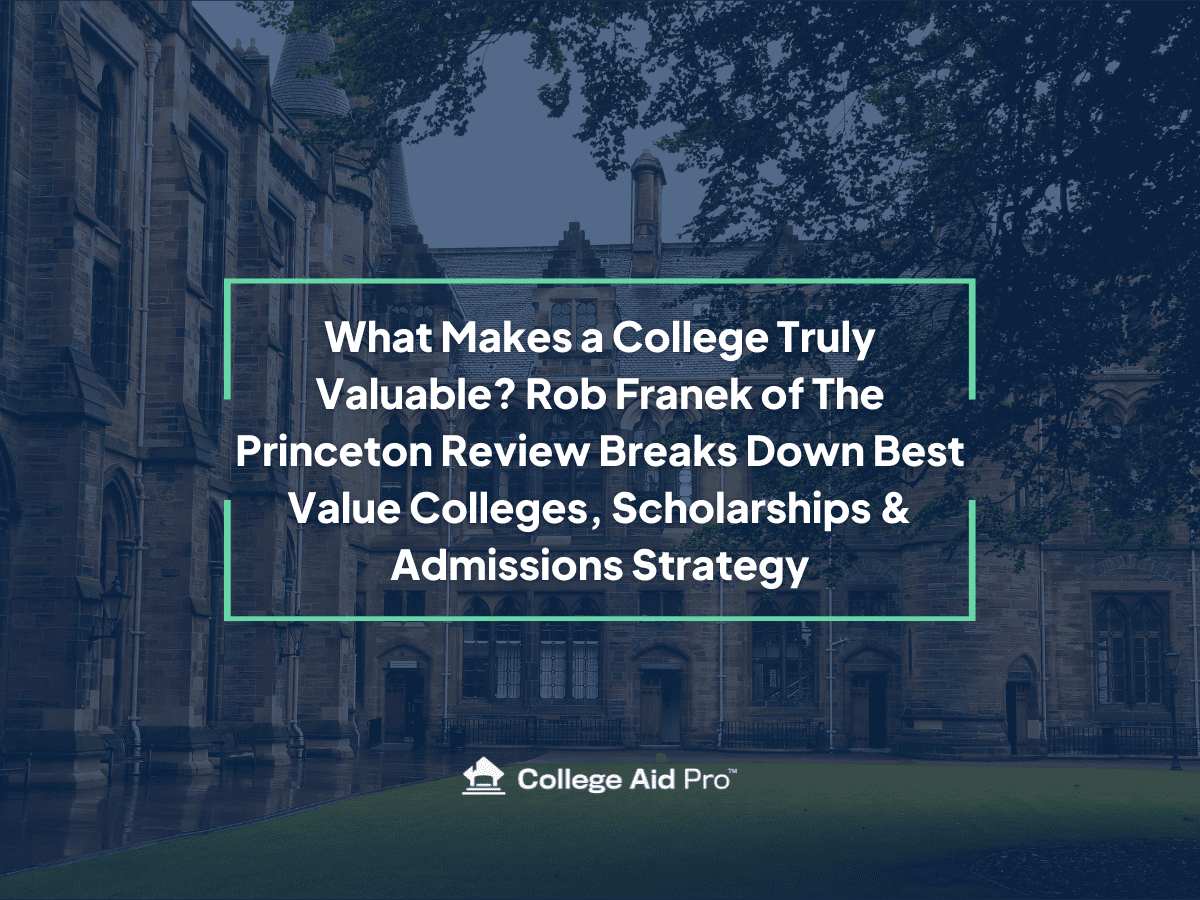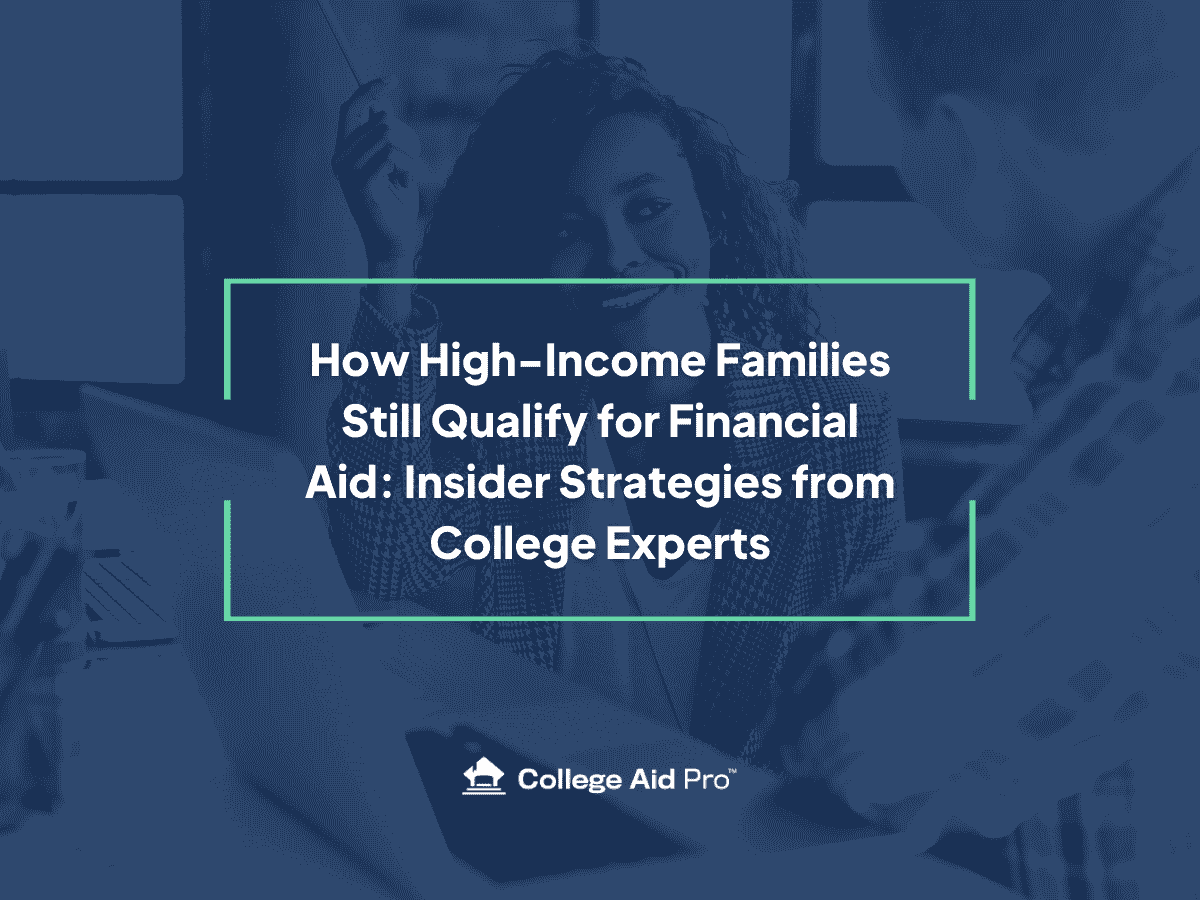What Makes a College Truly Valuable? Rob Franek of The Princeton Review Breaks Down Best Value Colleges, Scholarships & Admissions Strategy
Summary: In this insightful conversation, Matt Carpenter of College Aid Pro sits down with Rob Franek, Editor-in-Chief of The Princeton Review, to explore what “value” really means in the college search process. They discuss how families can balance cost, fit, and outcomes, and spotlight colleges that might surprise you in terms of affordability and return on investment.
Understanding “Value” in the College Search
When most families start looking at colleges, they quickly encounter a scary number: the sticker price. It’s not uncommon to see annual costs upwards of $80,000 or even $100,000 at top-tier private institutions. But as Rob Franek shares in this episode of the College! podcast, sticker price isn’t the number that matters most.
“Value,” he explains, is a much more nuanced concept. It’s not just about what a college costs up front—it’s about what you get for your investment. That includes:
- The quality of academics
- The on-campus experience
- The career outcomes post-graduation
- And, critically, how much debt you’re taking on
Rob adds, “We could’ve written a book called Best Cheap Colleges, but that misses the point. We’re not just looking for low cost—we’re looking for high return.”
How The Princeton Review Defines a Best Value College
Rob and his team at The Princeton Review have been ranking “Best Value Colleges” for over a decade. While the original guidebook is now out of print, the data-driven rankings are alive and well on their website. The methodology includes more than 40 factors, but the major criteria fall into three categories:
- Academic Quality – Is the school academically rigorous and supportive of student success?
- Affordability – What’s the true net cost after scholarships and grants?
- Career Outcomes – Are students being hired? What are their early and mid-career salaries?
To evaluate outcomes, The Princeton Review partners with PayScale.com to analyze post-graduation earnings and job satisfaction. They also survey students on campus to understand how satisfied they are with their financial aid, support services, and career development opportunities.
First-Gen Perspective: Rob’s Personal Story
Rob shares his own experience as a first-generation college student, growing up in New York and New Jersey. He attended Drew University, a private liberal arts college in New Jersey, and talks candidly about how his family approached the financial side of college.
“My parents didn’t really talk about money,” Rob recalls. “They didn’t have the language to talk about college affordability, and I didn’t know my dad was driving to the financial aid office every few weeks to figure out how to pay for it.”
That experience shaped his mission to help other students and families navigate the admissions process with more confidence and clarity.
Best Value ≠ Household Name
While the Best Value Colleges list includes elite schools like Princeton, Georgia Tech, and Williams College, it also highlights lesser-known schools offering extraordinary value.
For example:
- Reed College (Oregon): Sticker price of $87K+, but the average need-based aid award brings the real cost closer to $36K.
- UNC Chapel Hill (North Carolina): In-state students pay about $4K out of pocket after need-based aid.
- St. Olaf College (Minnesota) and Union College (New York): Both offer strong merit-based scholarships, particularly helpful for “bubble families” who don’t qualify for much need-based aid.
This is where families need to understand the difference between “expensive” and “unaffordable.” Sometimes, the school with the highest sticker price offers the biggest discounts.
The Role of Standardized Tests in Merit Aid
Even in a test-optional world, Rob emphasizes the importance of taking the SAT or ACT—especially for families hoping to qualify for merit-based aid.
“These are not great tests,” he admits, “but they’re very important. They absolutely impact admissions and scholarship decisions.”
Matt agrees, noting that even modest increases in test scores (e.g., ACT 21 → 24 or SAT 1200 → 1350) can unlock tens of thousands of dollars per year in merit scholarships at many institutions.
Their shared advice: take the test, see where you land, and decide whether to submit scores on a school-by-school basis. It’s a strategic move, not a one-size-fits-all rule.
Why Early, Honest Conversations About Money Matter
One of the most powerful themes in this episode is the importance of open dialogue between students and parents. Both Rob and Matt reflect on how their own families avoided money conversations—and how that added stress to the process.
Matt advises, “Put the cards on the table early. Even if you’re not sure how you’re going to pay for it, talking about it reduces anxiety and helps you make informed decisions.”
Rob adds, “If parents had just said, ‘Here’s what we can afford, let’s figure this out together,’ it would’ve changed everything.”
Practical Advice for Families Just Starting the Process
Rob closes the episode with encouraging words for families just beginning their college journey:
- You can do this. The process is “knowable and navigable,” even if it feels overwhelming at first.
- Cast a wide net. Don’t limit yourself by geography or perceived prestige.
- Focus on fit. Think beyond brand names—find schools where your student can thrive academically, socially, and financially.
- Look at the data. Use tools like The Princeton Review’s rankings and College Aid Pro’s MyCAP software to uncover real costs and opportunities.
Final Thoughts
This episode is a must-listen for any family thinking about college in today’s high-cost environment. Rob Franek brings years of insight, humor, and practical wisdom to the conversation, reminding us that college is about finding the best return on your investment—academically, financially, and personally.
🎧 Listen to the full episode to hear more tips, insights, and specific school spotlights from Rob and Matt.



